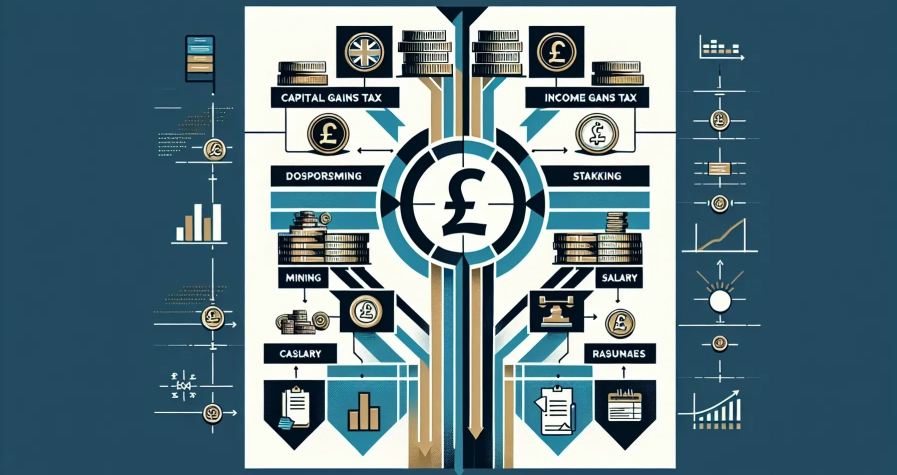Key Takeaways
- Paper wallets are physical documents containing your cryptocurrency’s public and private keys printed on paper, providing complete offline storage that’s immune to cyber attacks, malware, and hardware failures.
- Maximum security through offline isolation makes paper wallets ideal for long-term cryptocurrency storage, as they eliminate digital vulnerabilities whilst requiring no electricity, software updates, or internet connections.
- Creation requires technical knowledge and proper security measures, including using offline computers, verified wallet generators, and non-networked printers to ensure private keys remain completely secure during generation.
- Physical vulnerabilities pose significant risks, including damage from water, fire, theft, or loss, making proper storage in fireproof safes or safety deposit boxes with multiple backup copies essential for protection.
- Limited transaction convenience means paper wallets aren’t suitable for frequent trading, as accessing funds requires importing private keys into digital wallet software for every transaction, creating additional security considerations.
- Best suited for long-term investors who prioritise maximum security over convenience, particularly for storing large amounts of cryptocurrency as a “cold storage” solution with minimal ongoing maintenance requirements.
Paper wallets represent one of the most secure yet surprisingly simple methods for storing cryptocurrency offline. If you’re concerned about digital security breaches and online hacking attempts, this old-school storage solution might be exactly what you need to protect your digital assets.
Unlike digital wallets that exist on your computer or smartphone, a paper wallet is essentially a physical document containing your cryptocurrency’s public and private keys printed on paper. It’s completely offline, making it immune to cyber attacks, malware, and hardware failures that could compromise other storage methods.
Understanding how paper wallets work can help you make informed decisions about cryptocurrency security. Whether you’re a seasoned investor looking for cold storage solutions or a beginner exploring safe storage options, learning about paper wallets will expand your knowledge of cryptocurrency management and potentially save you from costly security mistakes.
What Is a Paper Wallet?
A paper wallet represents a physical document containing your cryptocurrency’s public and private keys printed on paper. This offline storage method provides maximum security for your digital assets by keeping them completely disconnected from internet-based threats.
Definition and Basic Concept
Paper wallets function as cold storage devices that hold your cryptocurrency keys in printed format. You receive two essential components: a public address for receiving funds and a private key for accessing and spending your cryptocurrency. The wallet generates these keys through cryptographic algorithms that create unique alphanumeric strings specific to your chosen cryptocurrency.
Most paper wallets display keys as both text strings and QR codes for easier scanning. Bitcoin paper wallets typically show a 34-character public address starting with “1” or “3” and a 51-character private key beginning with “5”, “K”, or “L”. Ethereum paper wallets contain 42-character addresses starting with “0x” and 64-character private keys.
Physical vs Digital Storage
Physical paper wallets eliminate digital vulnerabilities that affect online and software wallets. Your private keys exist only on paper, making them immune to malware, phishing attacks, and exchange hacks that have compromised millions of pounds worth of cryptocurrency.
Digital wallets store keys on electronic devices or cloud servers, creating multiple attack vectors for cybercriminals. Software wallets face risks from keyloggers, screen capture malware, and operating system vulnerabilities. Hardware wallets, whilst more secure than software options, still contain electronic components that can fail or become compromised through firmware attacks.
Paper wallets require no electricity, software updates, or internet connections to secure your cryptocurrency. You maintain complete control over your private keys without relying on third-party services or device manufacturers. This independence comes with responsibility – you become solely accountable for protecting the physical document from damage, theft, or loss.
How Does a Paper Wallet Work?
Paper wallet functionality relies on sophisticated cryptographic processes that generate and store your cryptocurrency keys offline. The mechanism operates through three fundamental stages that ensure complete security isolation from digital threats.
Key Generation Process
Paper wallet generators create your cryptocurrency keys through cryptographic algorithms that produce truly random number sequences. These generators utilise entropy sources such as mouse movements, keyboard inputs, or system randomness to ensure unpredictable key creation. The process typically involves downloading trusted open-source software like BitAddress.org or WalletGenerator.net onto an offline computer.
Random number generation forms the foundation of secure key creation, where algorithms combine multiple entropy sources to produce unique private keys. The generator converts these random numbers into Bitcoin addresses using elliptic curve cryptography (ECC), specifically the secp256k1 curve. Each generated private key undergoes mathematical transformation to create its corresponding public key through irreversible cryptographic functions.
Most paper wallet generators allow you to create multiple addresses simultaneously, generating batches of 10, 50, or 100 key pairs at once. The process typically completes within seconds, producing both the raw alphanumeric strings and scannable QR codes for each address pair.
Public and Private Key Pairs
Your paper wallet contains two essential cryptographic components that work together to control your cryptocurrency funds. The private key functions as your digital signature authority, enabling you to authorise transactions and prove ownership of the associated cryptocurrency. This 256-bit number appears as a 51-character string beginning with ‘5’, ‘K’, or ‘L’ for Bitcoin addresses.
Public keys derive mathematically from private keys through elliptic curve multiplication, creating a one-way cryptographic relationship. The public key undergoes further hashing through SHA-256 and RIPEMD-160 algorithms to produce your wallet address. This address serves as your receiving location, allowing others to send cryptocurrency to your paper wallet without accessing your private key.
Private key formats include Wallet Import Format (WIF), compressed WIF, and hexadecimal representations, with most paper wallets displaying the WIF version for easier import. Public addresses typically appear as 26-35 character strings starting with ‘1’, ‘3’, or ‘bc1’ for Bitcoin, depending on the address type. The mathematical relationship ensures that private keys can generate public keys, but public keys cannot reveal private keys.
Offline Storage Mechanism
Paper wallet storage operates entirely without internet connectivity, eliminating digital attack vectors that compromise online wallets. Your printed document contains all necessary information to control your cryptocurrency, requiring no additional software or hardware dependencies. The offline nature means hackers cannot access your keys through network intrusions, malware infections, or phishing attempts.
Physical storage security depends on environmental protection measures that preserve the printed keys’ readability over time. Paper degradation, ink fading, and moisture damage pose primary risks to offline paper wallet storage. Many users laminate their paper wallets or store them in waterproof containers to extend document lifespan.
Backup strategies typically involve creating multiple copies stored in separate secure locations such as bank safety deposit boxes, fireproof safes, or trusted family members’ homes. Some users transfer paper wallet information onto more durable materials like metal plates or engrave keys into steel sheets for enhanced longevity. The storage mechanism requires no electricity, maintenance, or software updates, making it completely independent of technological infrastructure.
Creating a Paper Wallet
Creating your paper wallet involves generating cryptographic keys offline and printing them on physical documents. You control every aspect of this process to ensure maximum security for your cryptocurrency storage.
Step-by-Step Guide
Download verified paper wallet generator software from the official cryptocurrency website or trusted open-source repositories like GitHub. Bitcoin users commonly choose BitAddress.org whilst Ethereum holders prefer MyEtherWallet’s offline version.
Disconnect your computer from the internet before running the generator software. This isolation prevents potential malware from intercepting your private keys during the generation process.
Run the wallet generator software on your offline computer and move your mouse randomly or type random characters to create entropy. The software uses this randomness to generate truly unique cryptographic keys through secure algorithms.
Generate your key pair by clicking the generate button after providing sufficient entropy. The software creates both your private key and public address simultaneously using cryptographic functions.
Print your paper wallet using a printer that isn’t connected to any network. Most generators provide templates with QR codes alongside the alphanumeric key strings for easier scanning.
Verify the printed keys by checking that both the private key and public address match exactly with what appears on your screen. Any discrepancies indicate printing errors that could result in lost funds.
Clear your computer’s memory by restarting the machine and securely deleting any temporary files that might contain traces of your generated keys.
Tools and Software Required
| Tool Category | Specific Requirements | Purpose |
|---|---|---|
| Computer | Offline-capable device with internet disconnect ability | Secure key generation environment |
| Printer | Non-networked printer with sufficient ink/toner | Physical wallet creation |
| Paper | High-quality paper or specialised crypto wallet templates | Durable key storage medium |
| Software | Verified open-source wallet generators | Cryptographic key creation |
Paper wallet generator software forms the foundation of your creation process. BitAddress.org serves Bitcoin users whilst WalletGenerator.net supports multiple cryptocurrencies including Litecoin and Dogecoin.
Offline computer systems provide the secure environment necessary for key generation. You can use dedicated air-gapped machines or temporarily disconnect existing computers from all network connections.
Non-networked printers eliminate the risk of key interception during printing. Laser printers typically produce more durable results than inkjet alternatives due to their resistance to water damage and fading.
Tamper-evident materials enhance your wallet’s physical security. Some users employ specialised cryptocurrency wallet paper or lamination materials to protect against environmental damage.
Security Considerations During Creation
Environmental isolation represents your primary security measure during paper wallet creation. Your computer must remain completely disconnected from the internet throughout the entire generation and printing process.
Software verification prevents compromised generators from stealing your private keys. Always download wallet generators from official sources and verify file hashes when provided by the developers.
Printer security requires using devices that lack network connectivity and memory storage. Some advanced users purchase dedicated offline printers specifically for cryptocurrency wallet creation.
Clean workspace preparation eliminates potential surveillance risks during the creation process. Close curtains cover windows and ensure no cameras or recording devices can capture your screen or printed materials.
Immediate key clearing removes digital traces of your private keys from computer memory and storage. Restart your computer and run disk-cleaning software to overwrite temporary files after wallet creation.
Multiple generation sessions allow you to create backup wallets during the same offline period. Generate several copies using different entropy sources to ensure you have secure backups stored in separate locations.
Physical security protocols protect your newly created wallet during and after printing. Handle printed materials with clean hands and immediately store them in secure locations away from potential observers.
Advantages of Paper Wallets
Paper wallets offer distinct advantages over digital storage methods, providing cryptocurrency holders with unmatched security and control. These benefits stem from their offline nature and physical form.
Enhanced Security Benefits
Paper wallets deliver maximum security through complete offline isolation. You maintain full control over your private keys without relying on third-party services or software applications. The cryptographic keys remain permanently disconnected from internet-connected devices, eliminating digital vulnerabilities that affect online wallets.
Your cryptocurrency assets stay protected from software malfunctions, operating system crashes, and hardware failures. Paper wallets don’t require updates, patches, or maintenance that could introduce security risks. The physical document provides tamper-evident security, as any unauthorised access attempts become immediately visible through physical damage or alterations.
Protection from Cyber Attacks
Paper wallets render cyber attacks ineffective against your cryptocurrency holdings. Hackers cannot access your private keys through malware, keyloggers, or remote infiltration methods. Your wallet remains immune to phishing attacks, database breaches, and exchange compromises that frequently target digital storage solutions.
Online threats such as ransomware, trojans, and spyware cannot reach your paper wallet’s stored information. You avoid risks associated with cloud storage vulnerabilities, server compromises, and man-in-the-middle attacks. The physical nature creates an air gap that prevents unauthorised digital access to your cryptocurrency funds.
Long-Term Storage Solutions
Paper wallets excel as long-term storage mechanisms for cryptocurrency investments. You benefit from indefinite storage periods without battery degradation, memory corruption, or device obsolescence that affects hardware wallets. The physical document requires no electricity, internet connection, or software compatibility to maintain your cryptocurrency access.
Your paper wallet maintains functionality across decades when properly stored and protected from environmental damage. You avoid ongoing costs associated with hardware replacements, software subscriptions, or cloud storage fees. The durability of quality paper and archival inks ensures your cryptographic keys remain readable for extended periods, making paper wallets ideal for generational wealth transfer and estate planning.
Disadvantages and Risks
Paper wallets present several significant challenges that can affect their practicality and security for cryptocurrency storage. Understanding these limitations helps you make informed decisions about whether paper wallets suit your specific storage requirements.
Physical Damage and Loss
Paper wallet vulnerability stems from its physical nature, exposing your cryptocurrency keys to various environmental and human-related risks. Water damage, fire, fading ink, and accidental tearing can permanently destroy your private keys, resulting in irreversible loss of funds.
Theft represents another critical concern, as anyone gaining physical access to your paper wallet obtains complete control over your cryptocurrency holdings. Unlike digital storage methods with password protection layers, paper wallets provide no additional security barriers once compromised.
Storage location becomes crucial for paper wallet protection, requiring secure environments that maintain consistent temperature and humidity levels. Bank safety deposit boxes, fireproof safes, and climate-controlled storage units offer better protection than standard home storage locations.
Backup creation introduces additional complexity, as multiple copies increase exposure risk whilst single copies create single points of failure. Each backup copy requires the same security measures as the original document, multiplying storage costs and management responsibilities.
Inconvenience for Regular Transactions
Paper wallet transactions require importing private keys into digital wallet software for every spending operation, creating significant friction for frequent cryptocurrency users. This process involves manual key entry or QR code scanning, increasing transaction time compared to digital wallet solutions.
Partial spending from paper wallets creates change address complications, as unused funds typically transfer to new addresses rather than returning to the original paper wallet. This behaviour requires generating new paper wallets for remaining funds, complicating transaction management.
Mobile accessibility becomes problematic when using paper wallets, as spending cryptocurrency requires access to wallet software and the physical document simultaneously. Travel situations often separate users from their paper wallets, preventing spontaneous transactions.
Transaction verification takes longer with paper wallets due to the import process and potential software synchronisation requirements. Digital wallets maintain constant blockchain connectivity, enabling immediate transaction broadcasting without additional setup steps.
Technical Knowledge Requirements
Paper wallet creation demands understanding of cryptographic principles, random number generation, and secure printing practices that many cryptocurrency users lack. Incorrect implementation during any stage compromises wallet security, potentially exposing private keys to malicious actors.
Wallet generator software verification requires technical skills to authenticate source code, check digital signatures, and identify potentially compromised versions. Users without programming knowledge struggle to distinguish legitimate generators from malicious alternatives designed to steal private keys.
Offline computer preparation involves disabling network connections, clearing temporary files, and ensuring complete isolation during key generation. These procedures require technical expertise to execute properly, as improper isolation allows potential key exposure.
Private key management extends beyond simple storage, requiring knowledge of key formats, import procedures, and compatibility across different wallet software versions. Users must understand hierarchical deterministic (HD) wallet structures and address derivation paths for successful fund recovery.
Recovery procedures demand familiarity with various wallet software interfaces, import formats, and potential compatibility issues between different cryptocurrency implementations. Technical users navigate these challenges more effectively than those lacking cryptocurrency infrastructure knowledge.
Best Practices for Paper Wallet Security
Paper wallet security practices determine the long-term protection of your cryptocurrency holdings. Implementing comprehensive security measures safeguards your paper wallet against physical and environmental threats that could result in permanent loss of funds.
Proper Storage Methods
Store your paper wallet in a fireproof safe or safety deposit box to protect against fire damage and theft. Bank safety deposit boxes offer additional security layers including surveillance systems and restricted access protocols that residential storage cannot match.
Use acid-free archival storage materials to prevent chemical deterioration of the paper over time. Place your paper wallet inside a protective sleeve or laminate it using museum-quality materials that won’t yellow or degrade after decades of storage.
Consider splitting your paper wallet storage across multiple secure locations if you hold significant cryptocurrency amounts. Geographic distribution reduces the risk of total loss from natural disasters or localised security breaches whilst maintaining accessibility for legitimate transactions.
Multiple Backup Copies
Create at least three identical copies of your paper wallet to ensure redundancy against loss or damage. Generate all copies during the initial creation process rather than photocopying the original to maintain consistent print quality and readability.
Store each backup copy in separate secure locations such as different bank branches or trusted family members’ safes. Label each copy with discrete identifiers that only you recognise to maintain anonymity whilst enabling proper organisation.
Test the QR codes and key readability on each backup copy before storing them permanently. Damaged or unclear characters render the entire paper wallet useless regardless of how securely you store it.
Establish a regular inspection schedule to verify the condition of all backup copies every 6-12 months. Document any deterioration signs and replace affected copies immediately using your master backup.
Environmental Protection
Control temperature and humidity levels in your storage environment to prevent paper degradation. Maintain temperatures between 60-70°F (15-21°C) and relative humidity below 50% to minimise chemical breakdown of paper fibres and ink.
Protect your paper wallets from direct sunlight and artificial UV light sources that cause ink fading and paper brittleness. Store wallets in dark environments or use UV-filtering storage containers for added protection.
Implement waterproof storage solutions such as sealed plastic bags or waterproof document containers. Water damage represents one of the most common causes of paper wallet destruction and renders cryptographic keys completely unreadable.
Monitor storage areas for pest activity including insects and rodents that may damage paper documents. Use appropriate pest control measures whilst ensuring chemical treatments don’t contaminate your storage containers.
Avoid storing paper wallets near magnetic fields or electronic devices that might interfere with QR code scanning capabilities. Electromagnetic interference can corrupt printed patterns and make digital scanning impossible.
Paper Wallets vs Other Storage Methods
Paper wallets offer distinct advantages and disadvantages compared to alternative cryptocurrency storage methods. Understanding these differences helps you make informed decisions about securing your digital assets.
Hardware Wallets Comparison
Hardware wallets provide enhanced security through dedicated physical devices that store your private keys offline. These USB-like devices generate and store cryptographic keys within secure elements, protecting against malware and unauthorised access attempts.
Security Features:
- Secure chip technology prevents key extraction
- PIN protection and recovery seed phrases
- Firmware verification and tamper-resistant design
- Support for multiple cryptocurrency types
Cost Considerations:
Hardware wallets typically cost £50-£200 per device, requiring ongoing firmware updates and potential replacement after 5-10 years of use. Paper wallets eliminate these recurring expenses, costing only the price of paper and ink.
Usability Differences:
Hardware wallets support frequent transactions through computer or mobile connections, whilst paper wallets require importing private keys for each transaction. Hardware devices display transaction details on built-in screens, reducing phishing risks during transfers.
Durability Factors:
Electronic components in hardware wallets can fail due to water damage, physical impacts, or battery degradation. Paper wallets resist electronic failures but remain vulnerable to fire, water, and physical deterioration over extended periods.
Software Wallets Comparison
Software wallets operate as applications on computers or mobile devices, storing private keys digitally within the device’s memory or secure storage areas. These wallets connect to blockchain networks through internet connections for real-time transaction processing.
Accessibility Features:
Software wallets enable instant transactions, portfolio tracking, and cryptocurrency exchanges through user-friendly interfaces. Paper wallets require manual key entry and blockchain synchronisation for balance checking and transaction broadcasting.
Security Vulnerabilities:
Software wallets face exposure to malware, keyloggers, and phishing attacks that target connected devices. Paper wallets eliminate these digital attack vectors but create physical security challenges requiring proper storage protocols.
Backup Requirements:
Software wallets generate recovery phrases for wallet restoration across multiple devices, whilst paper wallets rely solely on physical document preservation. Losing access to software wallet recovery phrases results in permanent fund loss, similar to paper wallet destruction.
Update Mechanisms:
Software wallets receive automatic security patches and feature updates through internet connections. Paper wallets remain static once created, requiring new wallet generation for enhanced security features or cryptocurrency compatibility updates.
Transaction Processing:
Software wallets facilitate immediate cryptocurrency transfers with network fee calculations and confirmation tracking. Paper wallet transactions require importing private keys into software applications, potentially exposing keys to online environments during the process.
Conclusion
Paper wallets represent one of the most secure methods for storing cryptocurrency long-term if you’re willing to accept the responsibility that comes with physical storage. They’re particularly valuable when you need maximum security for large holdings that won’t require frequent transactions.
However you’ll need to weigh their exceptional security benefits against the practical challenges of creation and maintenance. Your success with paper wallets depends largely on your technical knowledge and commitment to following proper security protocols.
Whether you choose paper wallets or alternative storage methods ultimately depends on your specific needs security priorities and technical comfort level. Consider your cryptocurrency usage patterns and storage requirements carefully before making this important decision.
Frequently Asked Questions
What is a paper wallet for cryptocurrency?
A paper wallet is a physical document that contains your cryptocurrency’s public and private keys printed on paper. It serves as a cold storage method, keeping your digital assets completely offline and disconnected from internet-based threats. The keys are typically displayed as both text strings and QR codes for easier access when needed.
How secure are paper wallets compared to digital wallets?
Paper wallets offer maximum security as they’re immune to online attacks, malware, and phishing attempts. Unlike digital wallets that remain connected to the internet, paper wallets eliminate all digital attack vectors. However, they’re vulnerable to physical risks like theft, damage, or loss, making proper storage crucial for maintaining security.
Can I use a paper wallet for frequent cryptocurrency transactions?
Paper wallets aren’t suitable for regular transactions due to their inconvenient nature. Each time you want to spend cryptocurrency, you must import the private key into a digital wallet, which compromises the offline security. They’re better suited for long-term storage rather than daily trading or spending activities.
What are the main risks of using paper wallets?
The primary risks include physical damage from fire, water, or deterioration over time, potential theft or loss of the document, and the technical complexity required for creation and management. Additionally, if you lose the paper wallet without backups, your cryptocurrency becomes permanently inaccessible with no recovery options available.
How do I create a secure paper wallet?
To create a secure paper wallet, use verified open-source wallet generator software on an offline computer, ensure your printer isn’t connected to any network, and generate the keys in a completely isolated environment. Print multiple copies on high-quality paper, store them in separate secure locations, and consider using fireproof safes for protection.
Should I choose a paper wallet or hardware wallet?
Hardware wallets are better for users who need regular access to their cryptocurrency and want enhanced security features with easier usability. Paper wallets are ideal for long-term storage and maximum security when properly created and stored. Consider your transaction frequency, technical expertise, and storage requirements when choosing between them.









